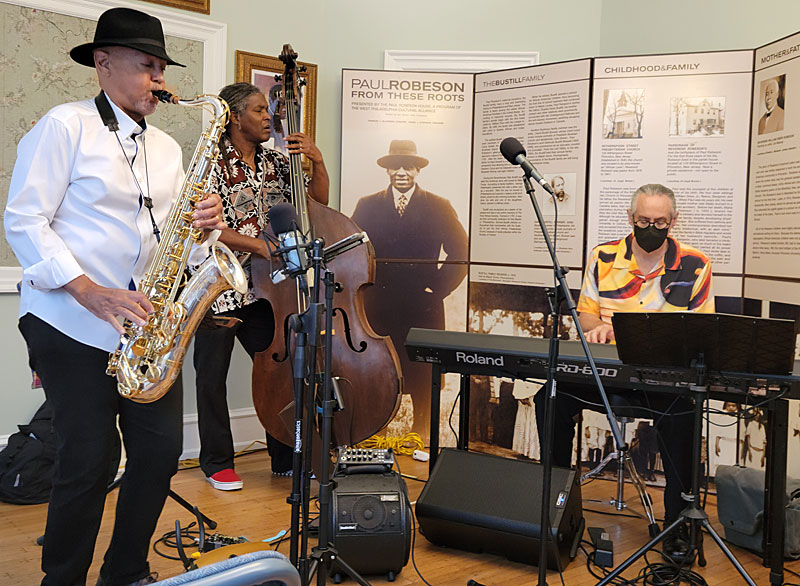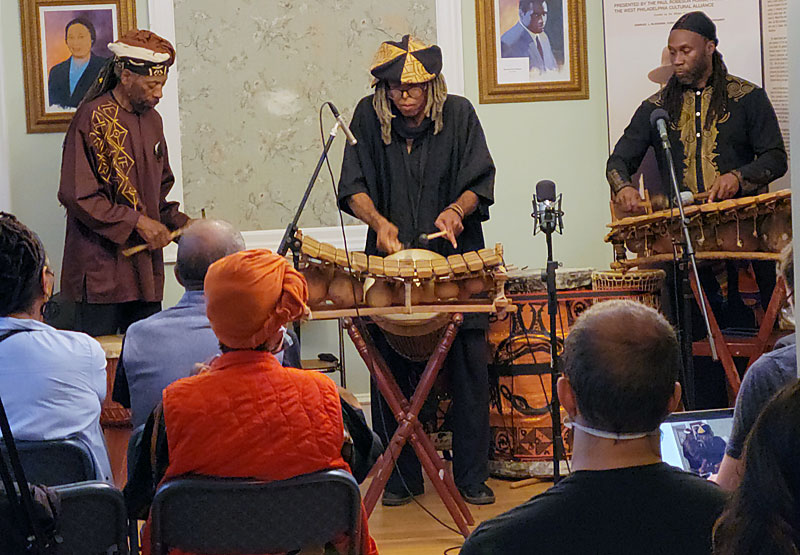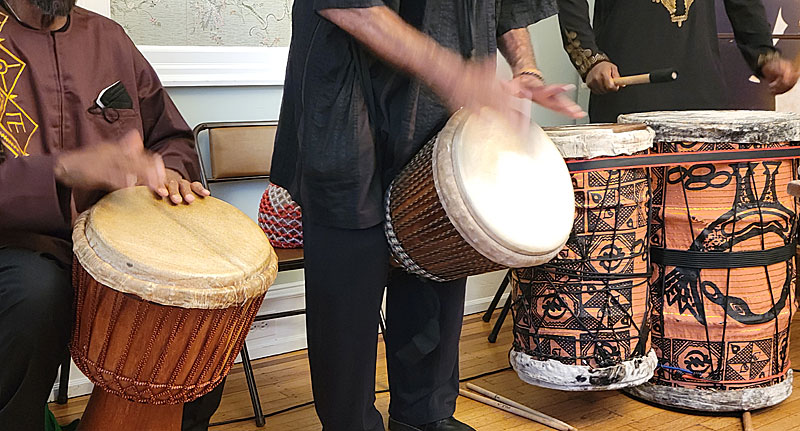Feet were tapping, heads were nodding, and hands were clapping when musicians broke through the clouds of a rainy day Sunday with sounds of joy inside the Paul Robeson House & Museum.
Bert Harris and the Afro Jazz Trio belted out freedom tunes that defied apartheid in South Africa. Zumbi Soweto and members of the Tyehimba African Drum and Dance Ensemble told the story of African culture through its history of drums.

The performances were the first in the Robeson House’s free Arts in the Parlor series this fall. Coming up on Sept. 25, portrait artist Tanya Bracey and photographer Raymond W. Holman Jr.; Oct. 9, scarf designer Roberto Rashid and quiltmakers-stitchers Sisters Interacting through Stitches; Oct. 23, violinist Jack Drummond and jazz vocalist Kevin Valentine, and Nov. 6, Chef Omar Tate. You can register here on Eventbrite: https://bit.ly/artsintheparlor22
The events are both musical and instructional. The performers/presenters intersperse their shows with snippets of details, history and stories about their music and creative works.
Harris and the Afro Jazz Trio kicked off the series with instrumental tunes by South African composers and singers. A bassist, Harris was joined by pianist David Dzubinski and saxophonist Laurent Bass, all members of a six-piece band.
The group played songs that were at the heart of South Africa’s anti-apartheid movement. One of the most popular was “Mannenberg,” recorded in 1974 by composer/pianist Abdullah Ibrahim. Formerly known as Dollar Brand, he was forced into exile by the country’s apartheid government. The song was a staple at anti-government rallies before apartheid ended in the 1990s. The Sunday set also included music composed by Winston “Mankunku” Ngozi, and a song made popular by the famous activist singer Miriam Makeba.
Harris, who is Philadelphia-born, said that he loved South African jazz for “the harmonies and the rhythms. Some of the songs had so much meaning.” Those songwriters captured in their music the inhumanity of apartheid in a country where Black Africans were the majority, he noted. “It was such a devious system,” he added, reminding the audience of the comparable Jim Crowism in the United States. Among Harris’ favorite African musicians was Nigerian Fela Kuti.

Harris dedicated the tune “Paul’s Pal,” by saxophonist Sonny Rollins, to Robeson. Rollins wrote the song in honor of bass player Paul Chambers in 1956.
Soweto is a longtime friend of the Robeson House. He is one of its artists-in-residence and a volunteer who works magic with his hands on African drums. He was a master storyteller of African folklore Sunday, while drummer Julani Ghana schooled the audience on the legacy of art, singing and storytelling in the culture. “It’s almost in our spiritual and our cultural DNA,” he said. Joining them was Ogunkemi on the djembe drum.
The group’s first tune was one “we just made up for this event, and the reason is to show you the greatness of African ancestry,” said Soweto. They proceeded to demonstrate first the sound of the djembe as it sparked the other drums to come together in a harmonious rhythm. He also pointed out the balafon, “the original piano,” he said.
Soweto’s performance was peppered with folklore, including one story about how the djembe came about: A farmer sought the help of a magical character to make work easier for his daughters. The farmer was told to create a drum out a tree and top it with goat skin. He was given a single rhythm to play for his daughters as they worked. When they heard it, they were compelled to dance – which made their work easier.
Soweto started playing drums in his 40s. Childhood is the best time to start, he said, because there are certain protocols in learning to drum correctly – without the shortcuts that he and others take, which causes their music to suffer. There’s a science to the rhythm, he said, and you must feel and sing it before you play it.
